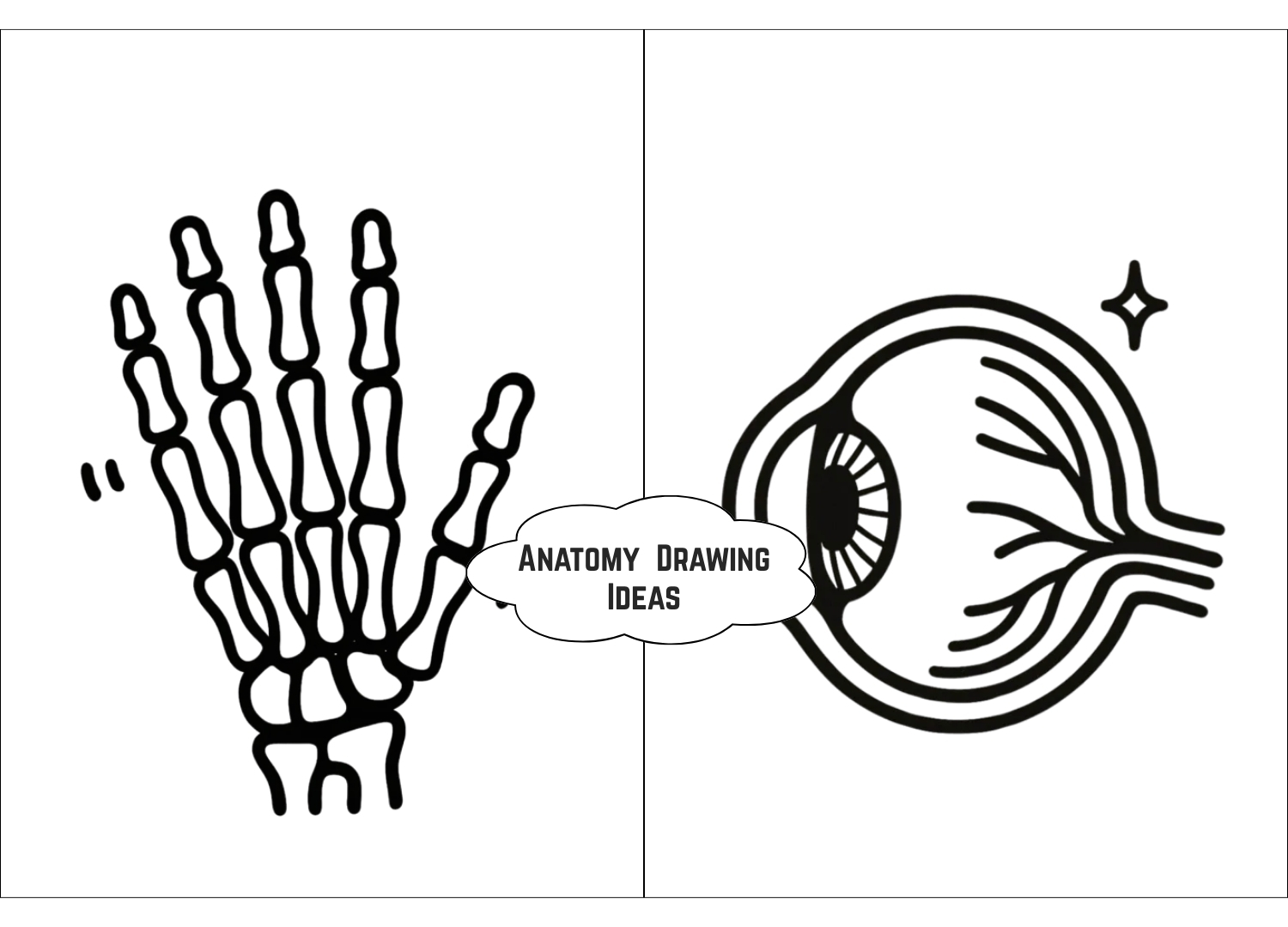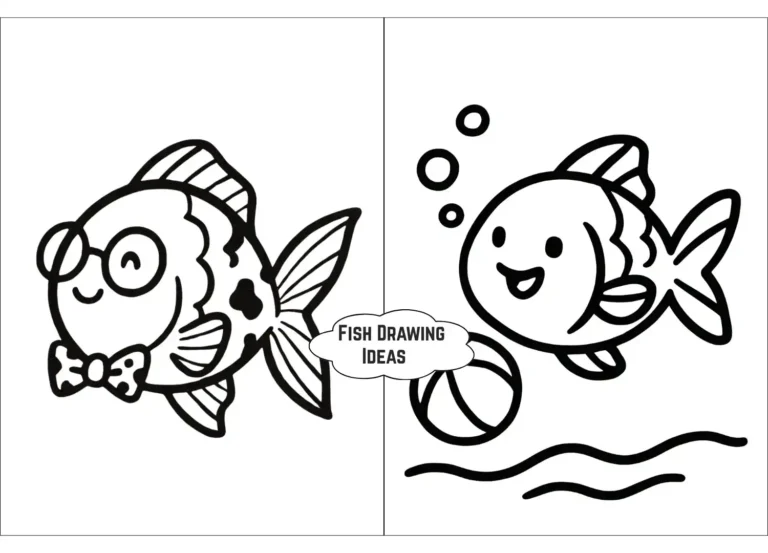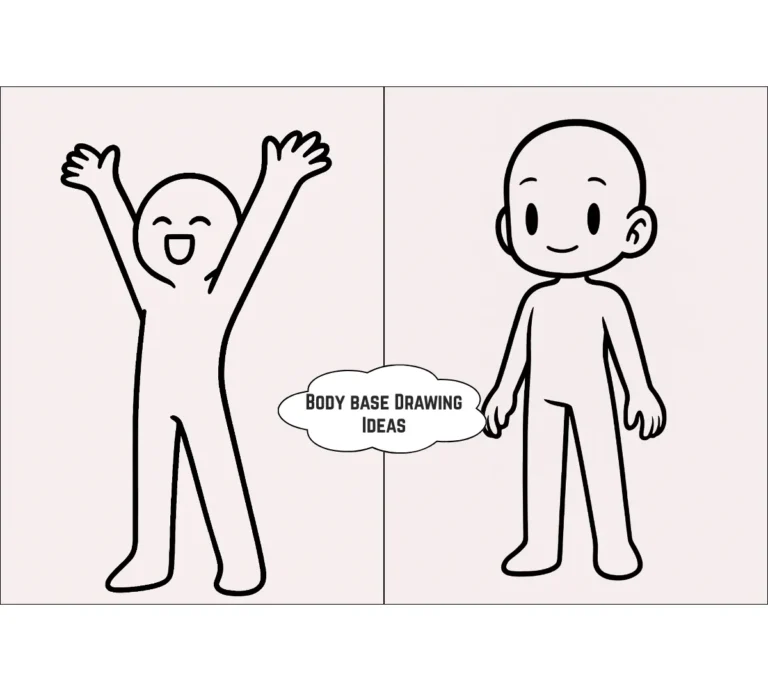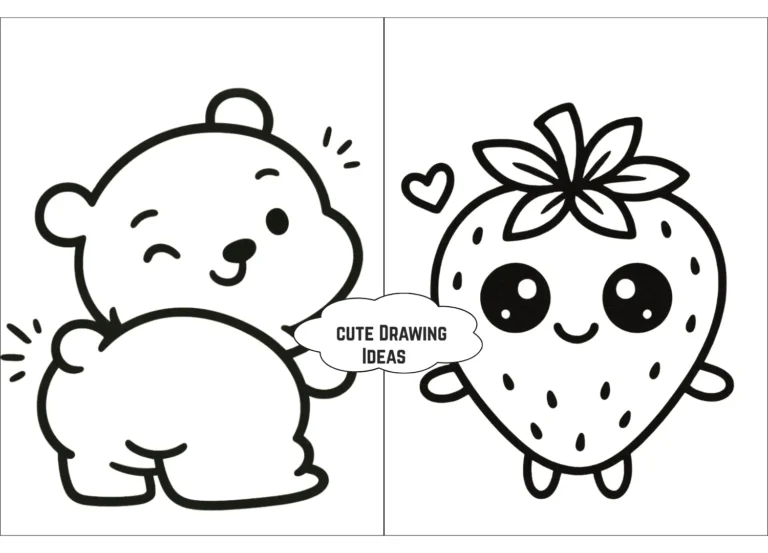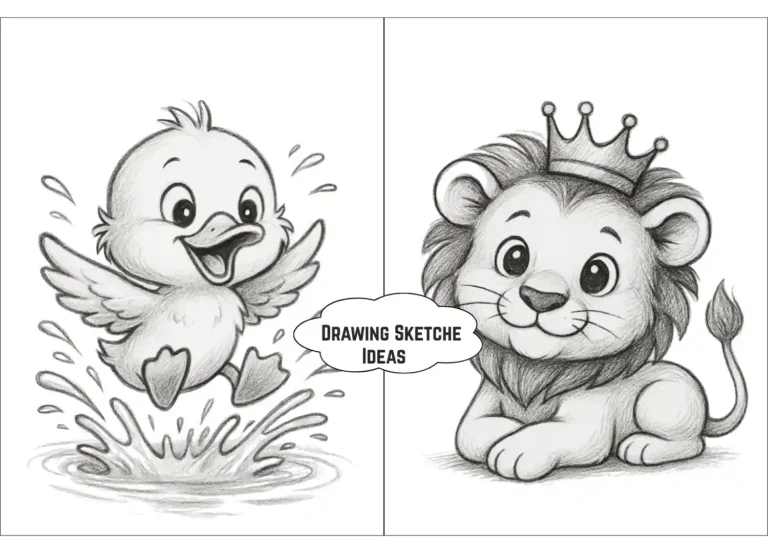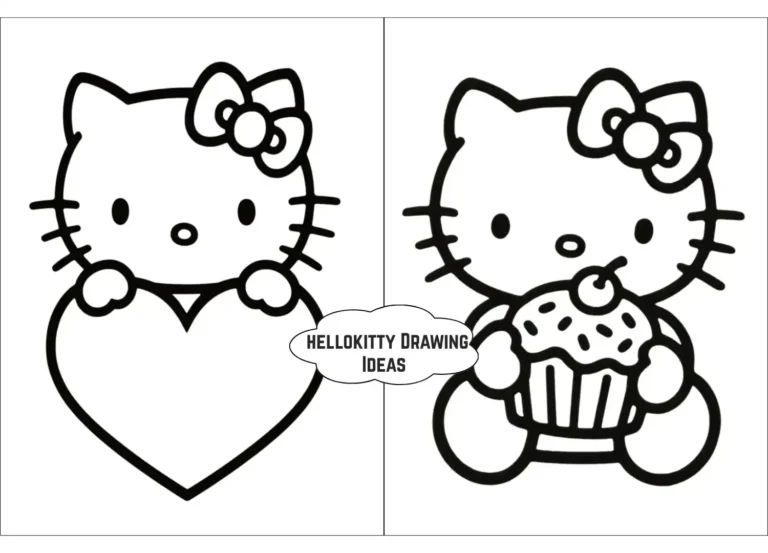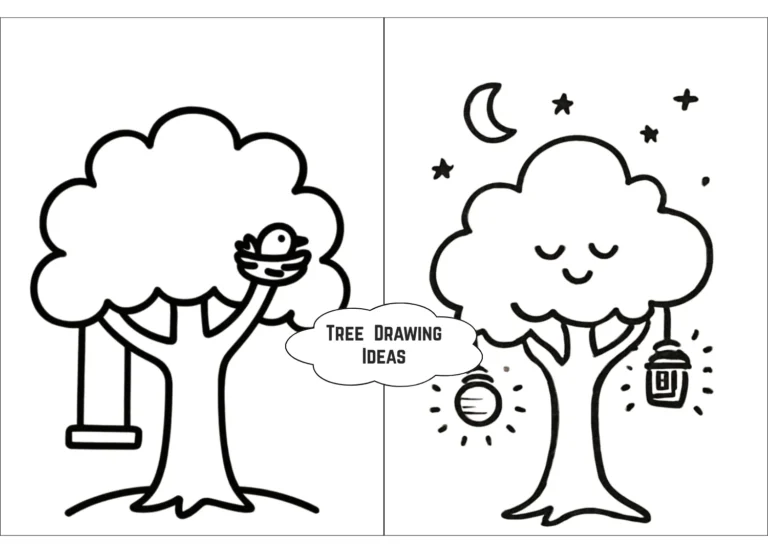26 Unique Anatomy Drawing Ideas to Improve Your Skills
Anatomy drawing is vital for artists who want to master the human form. Practising with different ideas can elevate your skills.
This list includes 26 unique anatomy drawing ideas. We’ve gathered various techniques and poses to test your understanding of the body.
No matter if you focus on muscles, bones, or movement, these tips will enhance your skills. They are perfect for beginners and seasoned artists alike.
These ideas will boost your creativity and help you show the human figure better.
Let’s check out these fun exercises! They’ll boost your skills and grow your artistic confidence.
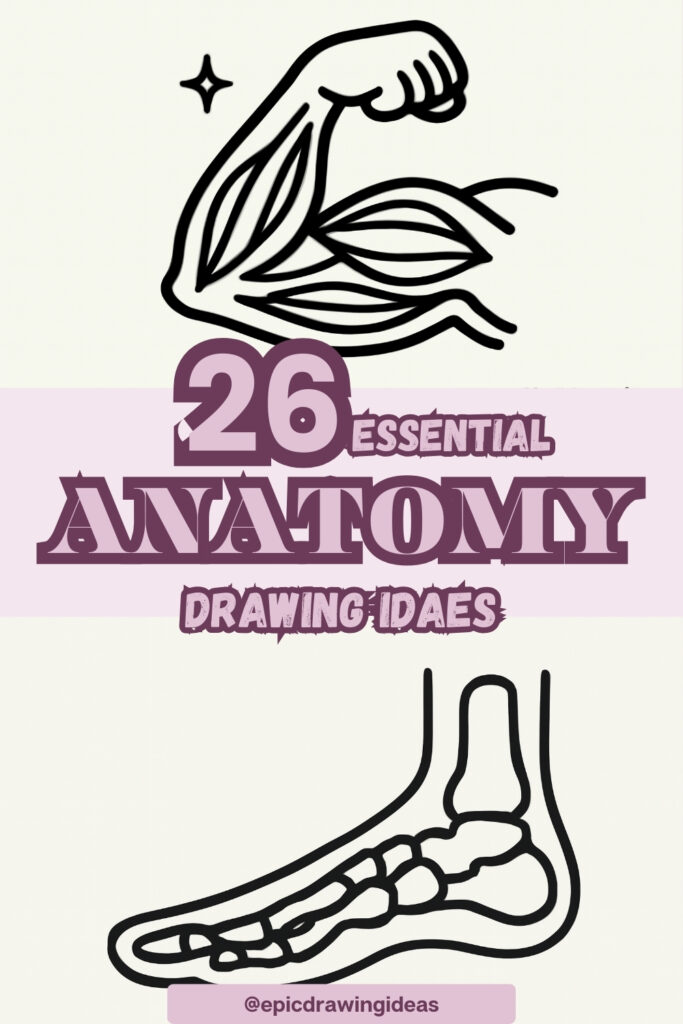
1. The Heart’s Anatomy
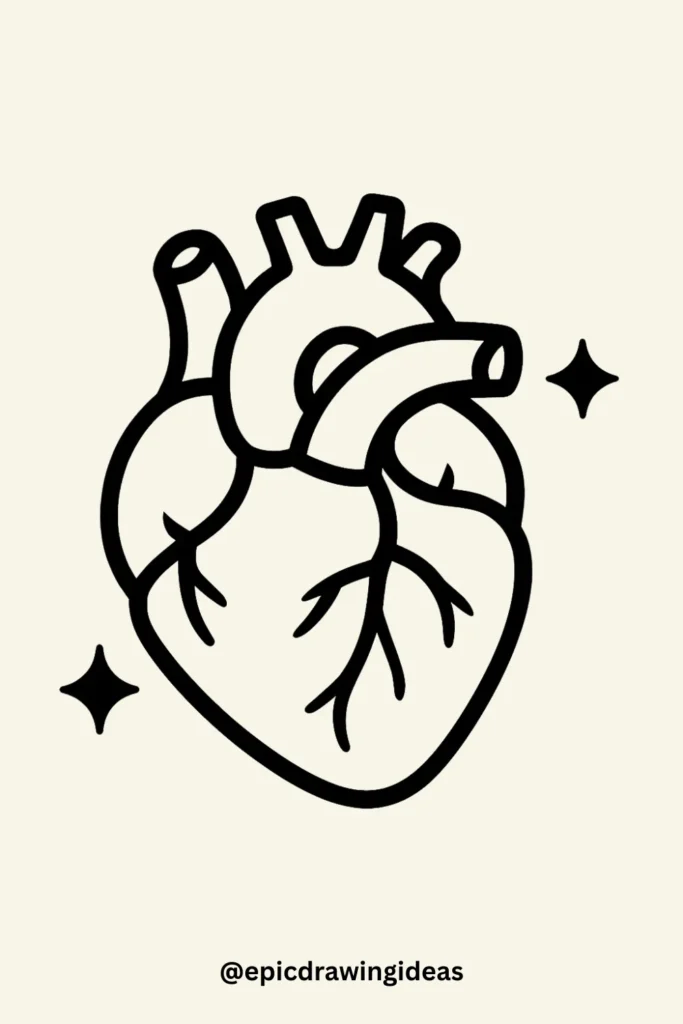
This drawing will highlight the heart’s inner workings. It will show the chambers with clear, clean lines.
The arteries and veins should be drawn in a playful, yet anatomically accurate manner. Make the heart soft and round.
Add charm with little sparkles or hearts inside to boost cuteness. Bold pencil strokes will show the heart’s details on the textured white background.
2. The Hand Skeleton
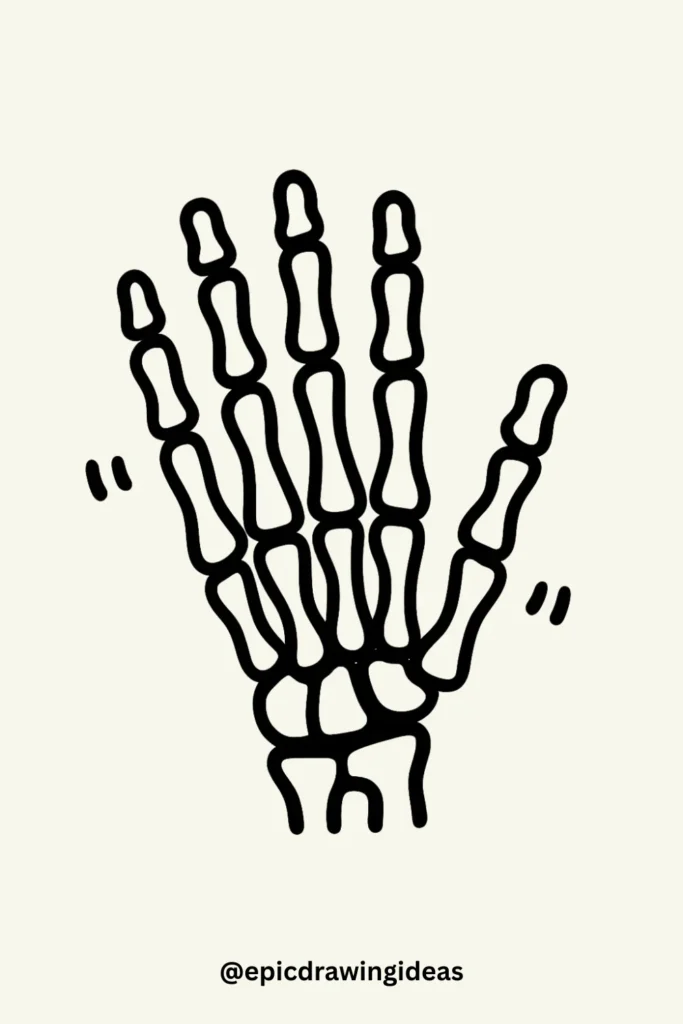
A simple hand skeleton shows the bones in the fingers and palm clearly. The hand should be lightly stylised, with gentle curves to soften the skeletal form.
Bold pencil strokes make the bones clear but not scary. This gives a fun anatomical look.
The hand can be shown either flat or in a soft pose to add some whimsy to the design.
3. A Cute Skull Anatomy
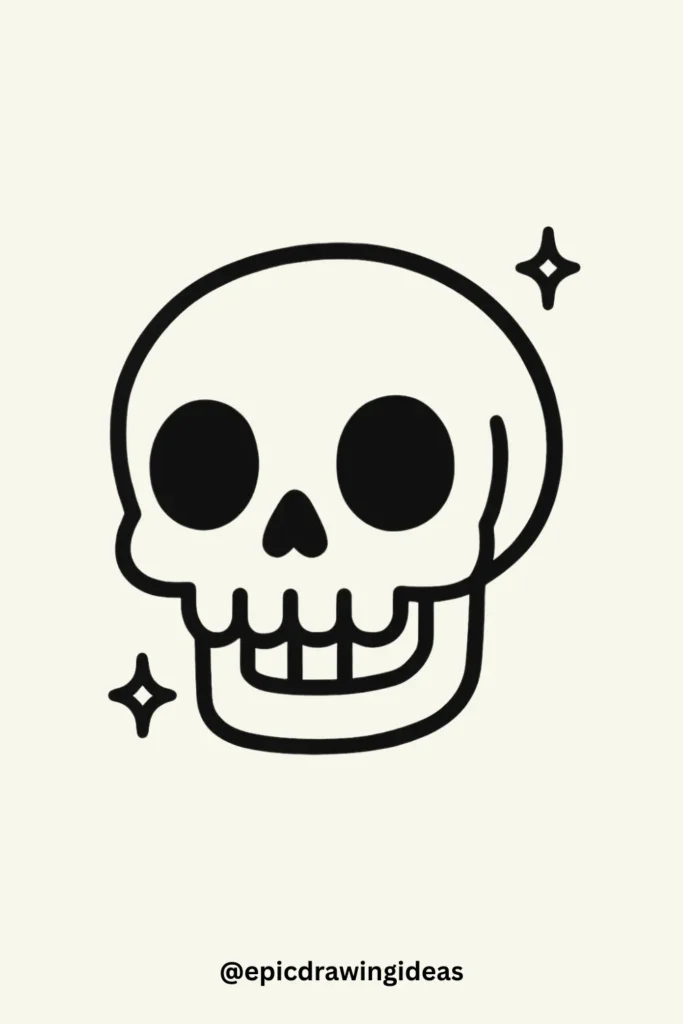
Show the skull anatomy in a cute, simple style. Use precise lines to highlight its basic structure.
Focus on the jaw, the rounded cranium, and the hollow eyes, but keep the lines playful and rounded.
The skull should feel friendly and non-intimidating, perfect for a whimsical anatomical drawing. You can also add little details like stars or sparkles around it for extra cuteness.
4. Muscles of the Arm
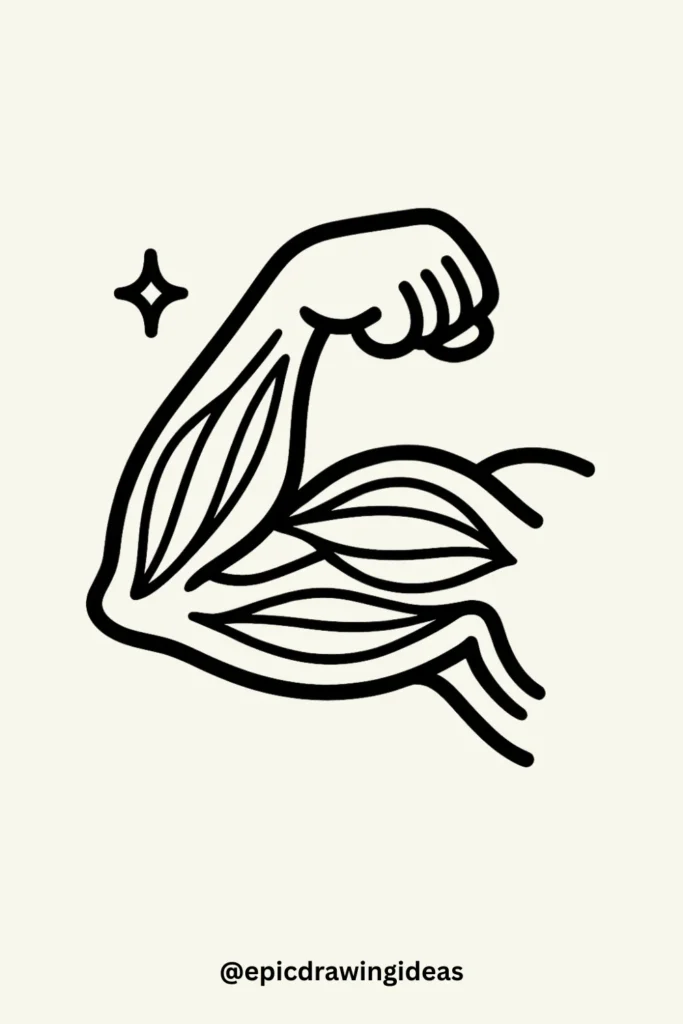
This illustration should highlight the arm’s anatomy. Focus on the muscle groups, like the biceps and triceps.
Show the muscles in a simplified, rounded style. Use bold pencil strokes to highlight the details.
Despite the anatomical focus, the drawing should maintain a soft, approachable feel.
Use subtle shading to show the depth of the muscles, keeping the whole thing light-hearted.
5. Eye Anatomy
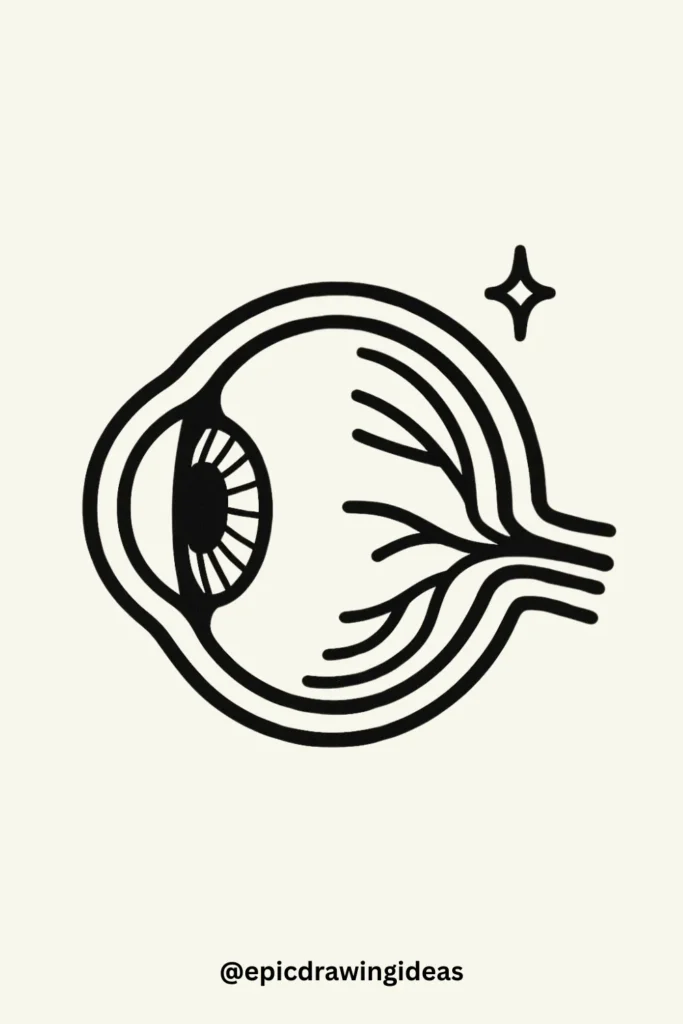
This drawing would focus on the eye’s inner workings. Show the iris, pupil, and layers like the retina and lens, but do so in a simplified, cute manner.
The lines should be bold but soft, with the eye looking gentle and approachable. Show the different parts of the eye.
Keep the illustration soft with rounded shapes. Add fun details like sparkles or blushes inside the eye to make it lively.
6. Nervous System: A Cute Connection
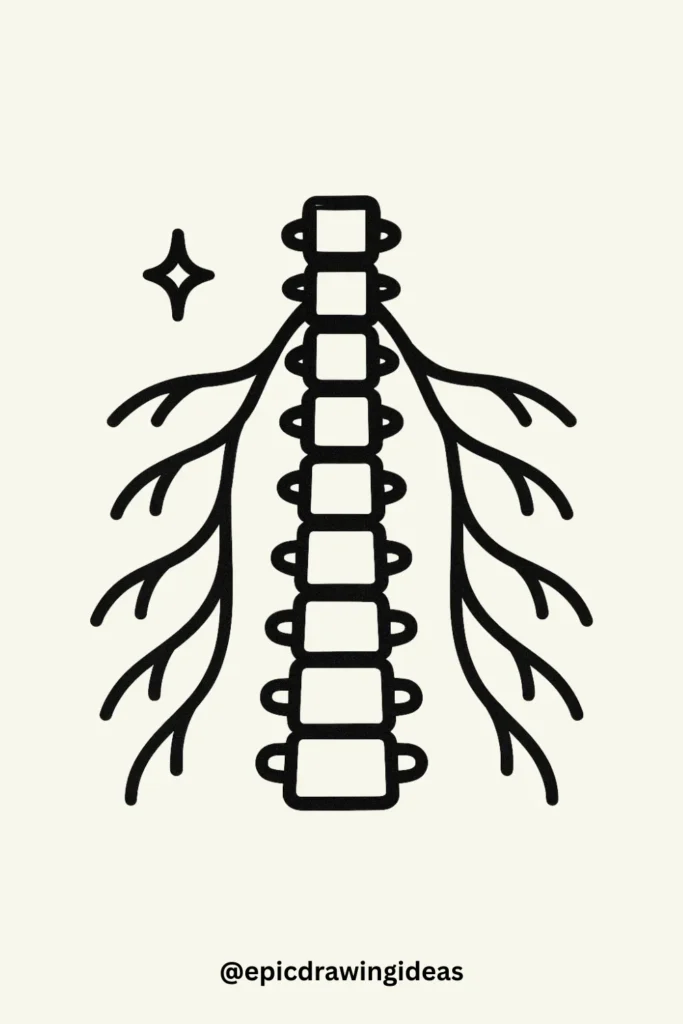
Draw the nervous system as a cute, simple spine. Make the nerve branches look like little tendrils reaching out.
The pencil strokes should be bold, not harsh. This highlights the system’s delicate nature. Keep the lines soft and rounded, allowing the drawing to feel approachable.
You can add lines or circles to show “energy” or “signals” moving through the nerves. This gives it a fun, interactive touch.
7. Brain Anatomy with Neurons
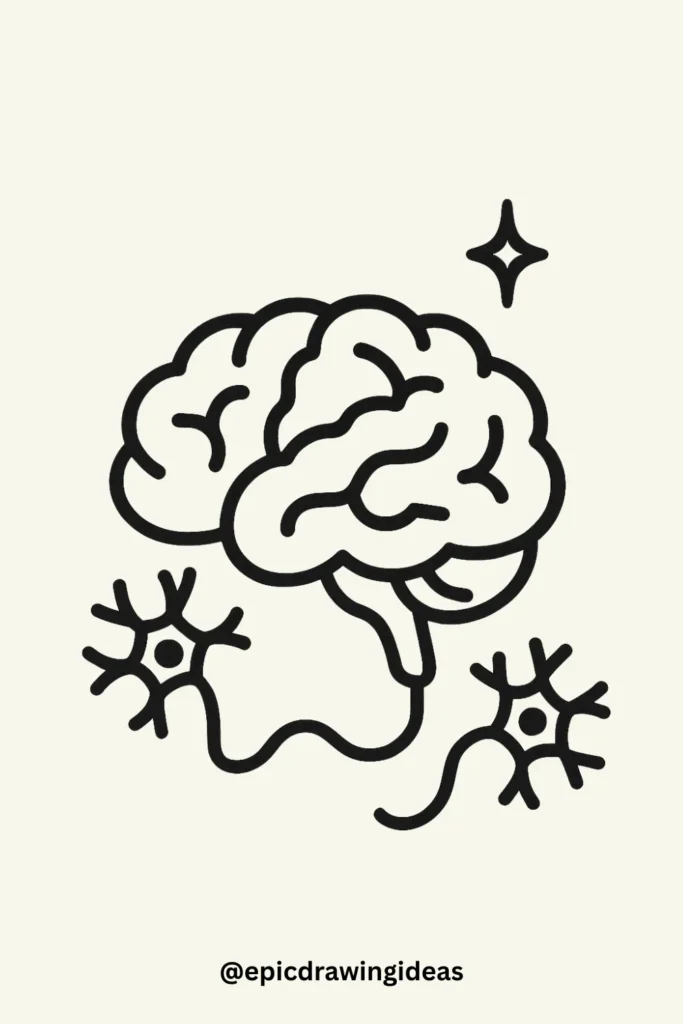
This drawing highlights the brain. Its folds and structure are clearly outlined. The brain’s neurons should look cute and simple.
They need soft, rounded lines that connect gently and whimsically. Bold pencil strokes will show the brain’s main structures.
Neurons can have little energy waves or sparkles around them. This makes the drawing feel fun and light-hearted.
8. Foot Bones and Arches
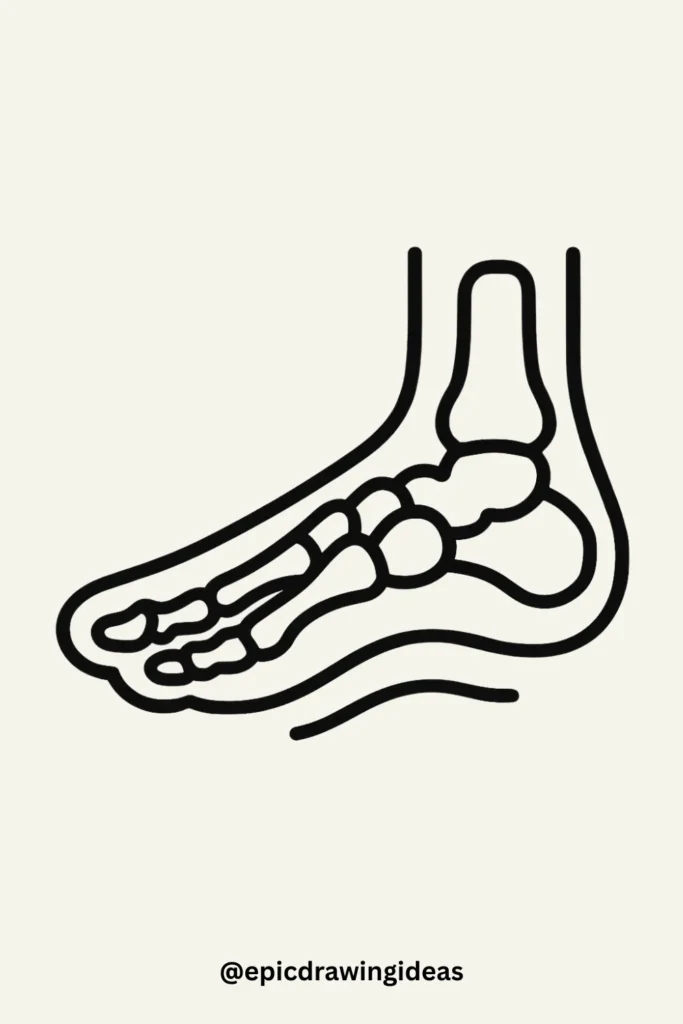
Focus on the bones and arch of the foot. Use precise pencil strokes to outline its shape. The toes, metatarsals, and ankle bones should be visible but drawn playfully.
Use soft, rounded lines for the arches, giving the foot a gentle, cute appearance. The bold lines give structure, but the style stays light and friendly.
9. Digestive System: The Whimsical Journey
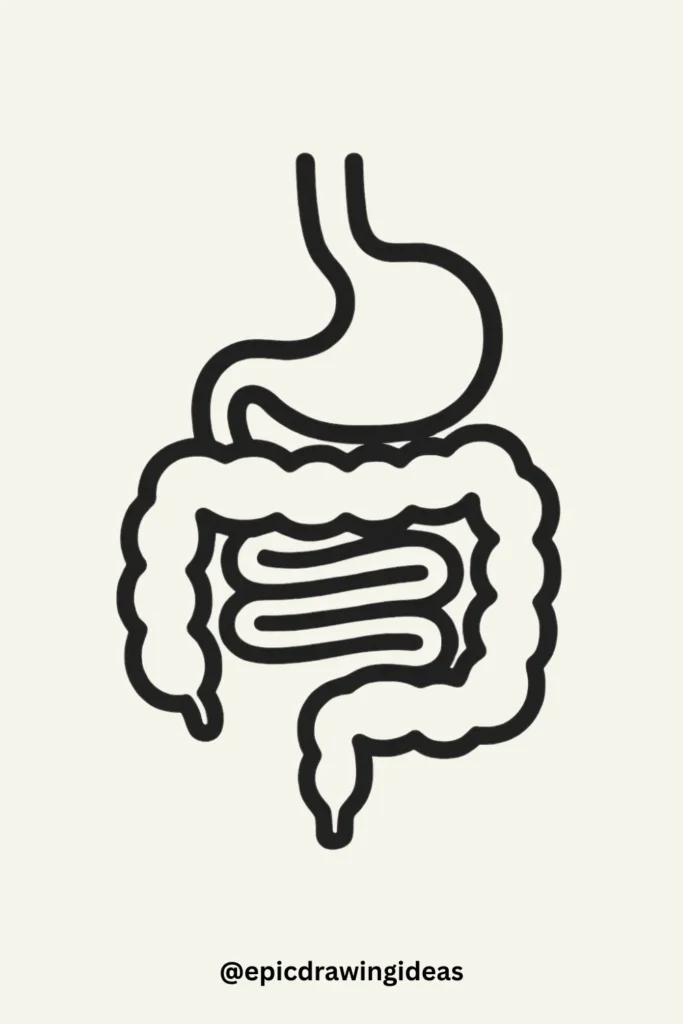
This drawing should simplify the digestive system into a cute, stylised version. The stomach, small intestines, and large intestines will be drawn in bold pencil.
They will have soft, rounded edges. You can show the digestive process by adding small arrows or wavy lines.
These will indicate how food moves through the system. Make the design light and fun. Add whimsical touches like smiling faces or hearts inside the organs.
10. Lungs: Breathing with Joy
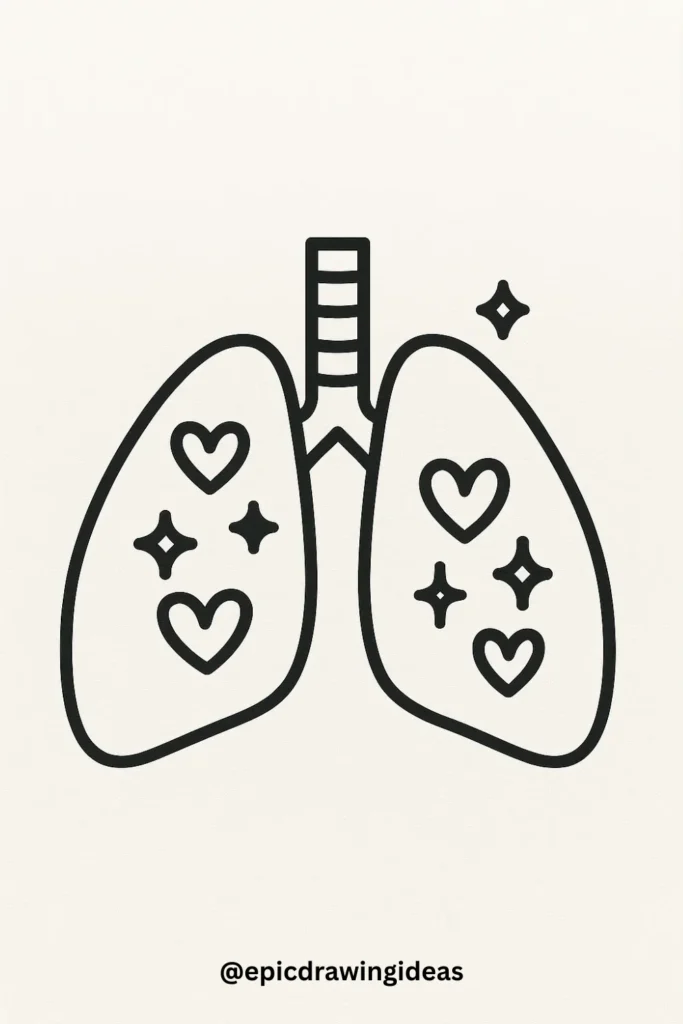
This drawing should clearly outline the lungs to show their shape and structure. Use a soft and cute style. In the lungs, add small hearts or sparkles.
They show the air flowing in and out, highlighting the joy of breathing. The pencil strokes will be bold but gentle.
The illustration should feel light. The lungs should look happy as they fill with air.
11. The Rib Cage
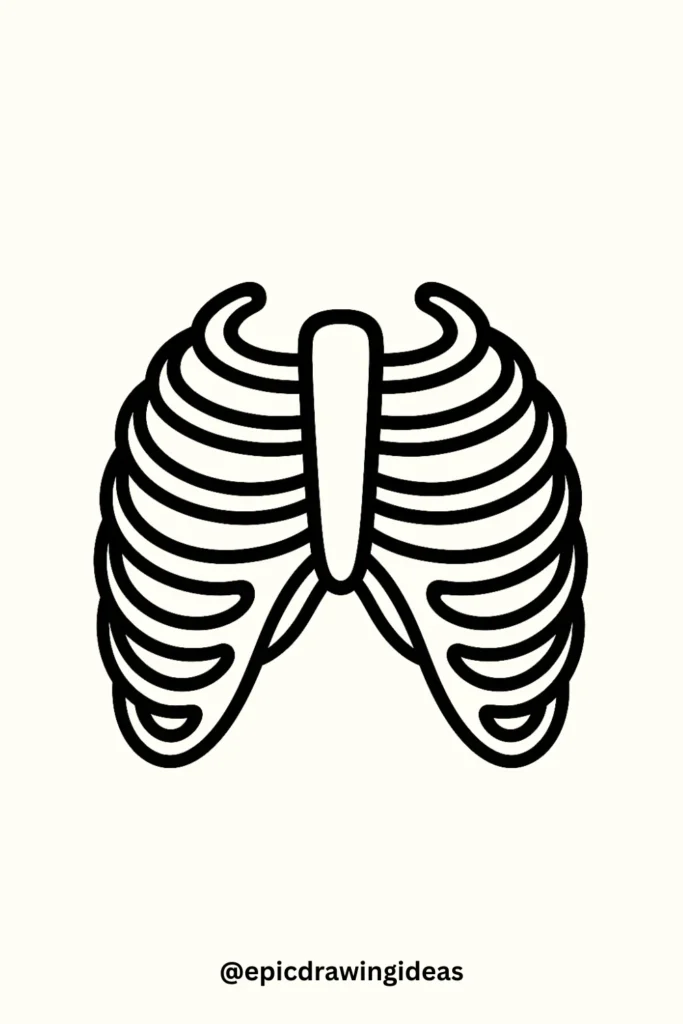
This illustration would show the rib cage as a rounded, stylized version, with clear, bold pencil outlines.
The ribs should be gently curved and spaced in a cute way, with the sternum drawn at the front.
Add little hearts or sparkles around the ribs to give it a light-hearted, whimsical feel. Keep the lines soft but distinct to show the structure clearly.
12. The Human Spine
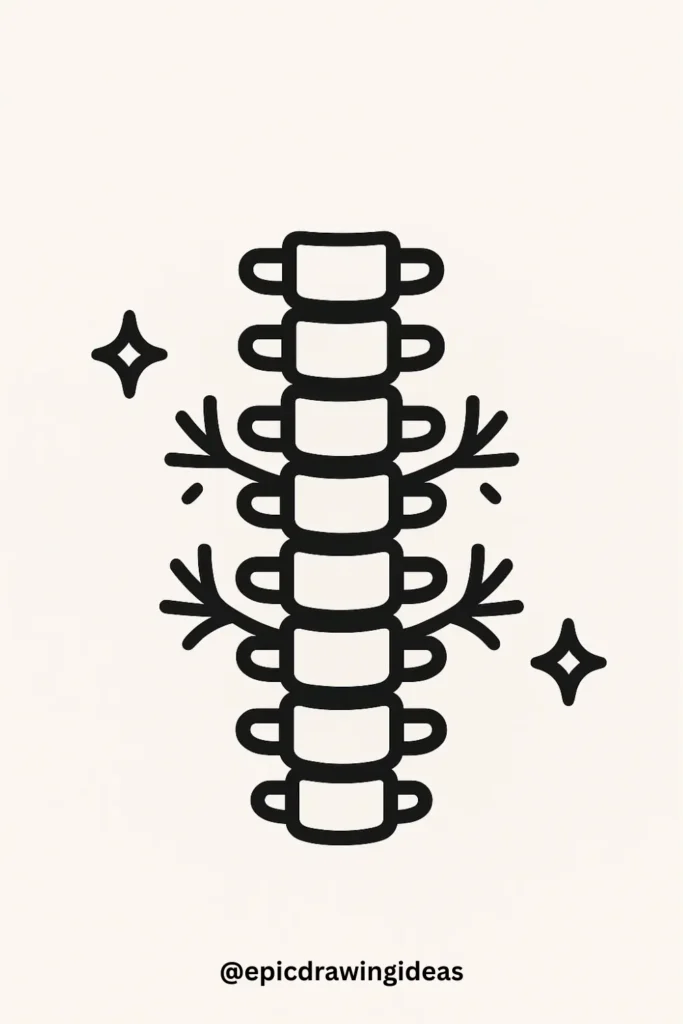
This drawing would feature the human spine with each vertebra outlined in a soft, rounded style.
The vertebrae should be clearly visible but not too harsh, with soft lines flowing between them.
Add small branches or sparkles extending from the spine to represent the nervous system for a cute, anatomical touch.
13. The Jaw and Teeth
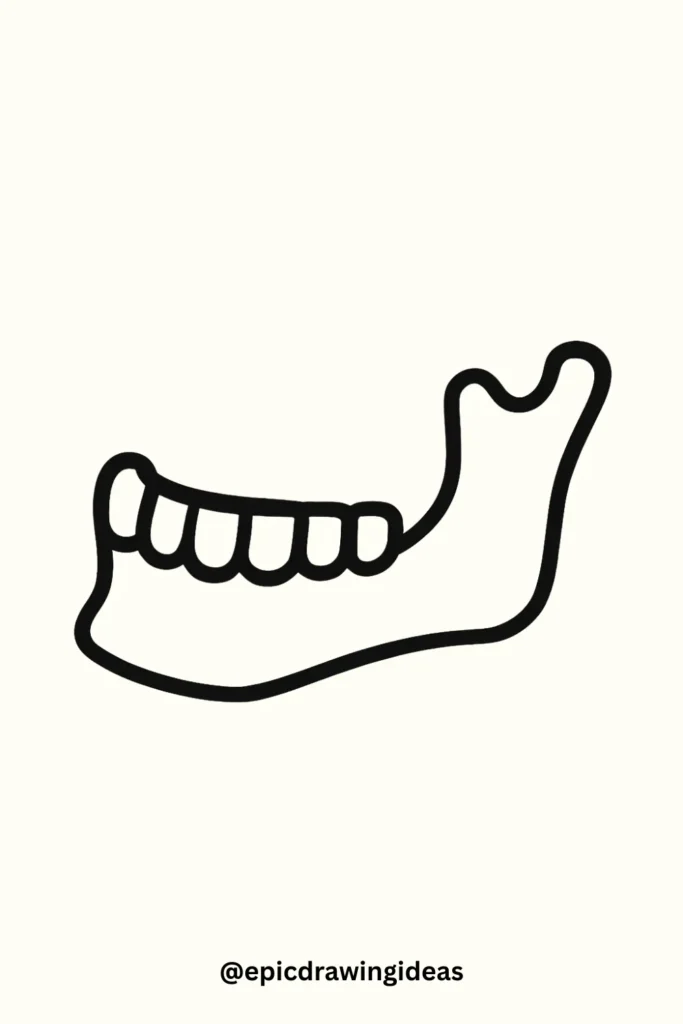
Illustrate the human jaw and teeth, with bold outlines for each tooth and a playful representation of the bone structure.
The teeth should be arranged in a friendly, rounded way, avoiding harsh sharp edges. You can even add a small smile to the drawing for extra cuteness.
14. The Ankle Bones
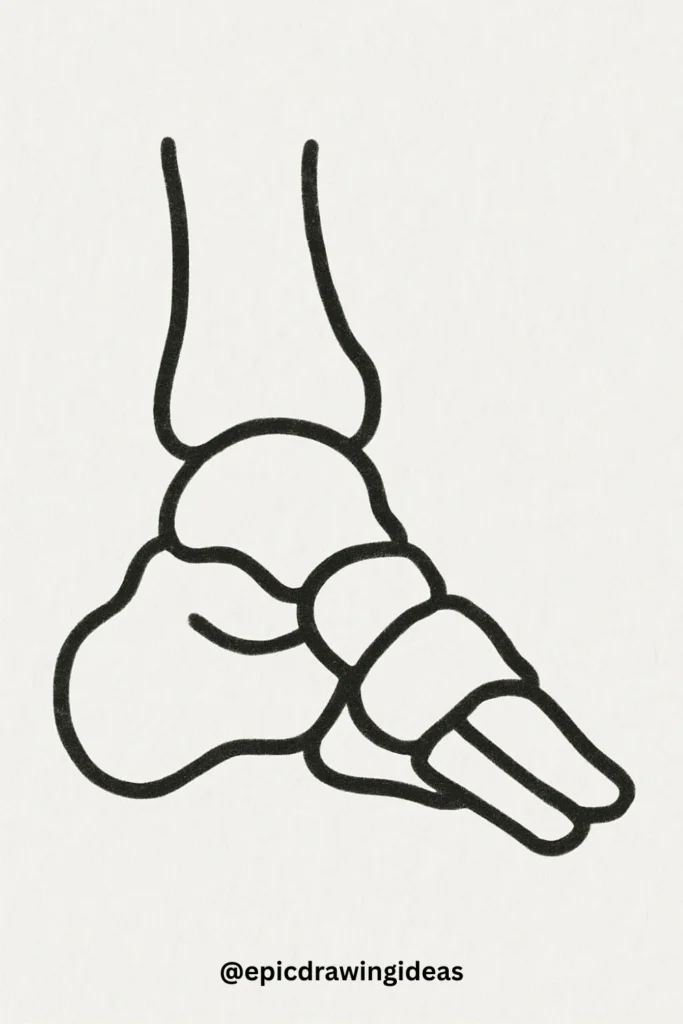
The ankle bones, including the talus and calcaneus, are illustrated with simplified, rounded shapes and bold, clear lines, making the structure easily recognizable.
The soft, circular design highlights the natural curves of the bones, maintaining anatomical clarity while keeping the illustration playful.
Small hearts or sparkles are scattered around the joints and feet, adding a whimsical, cute touch that brings lightness to the drawing.
15. The Nasal Passage
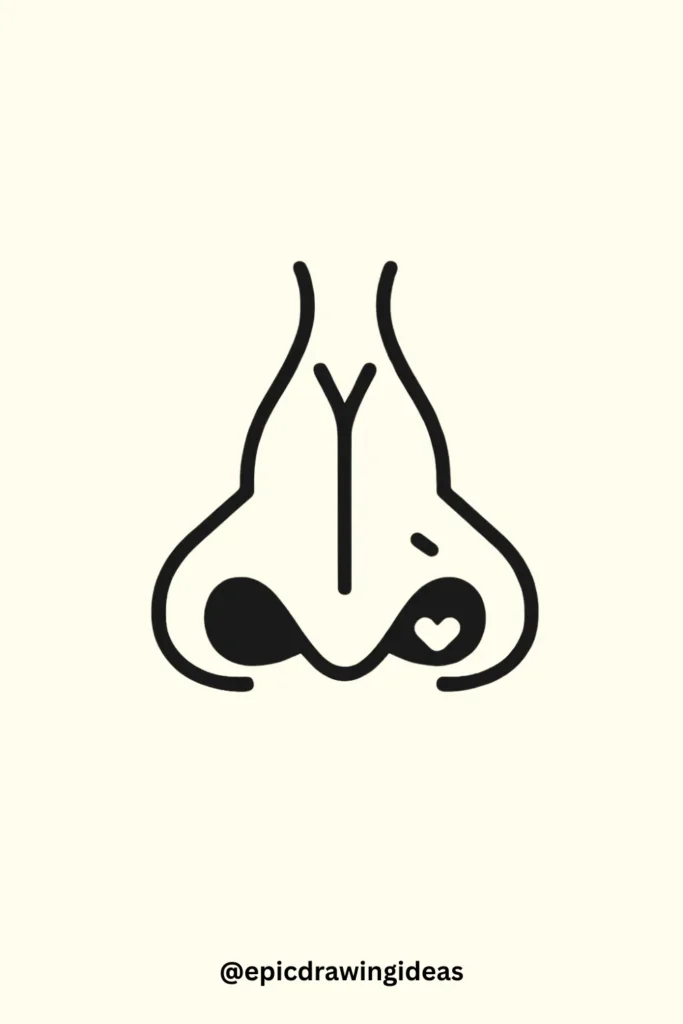
This drawing would focus on the nasal passage, with the bone structure of the nose clearly outlined in bold pencil strokes.
The overall structure should remain simple and approachable, with a little heart or sparkles inside the nasal passage to add a playful element.
16. The Hand’s Veins
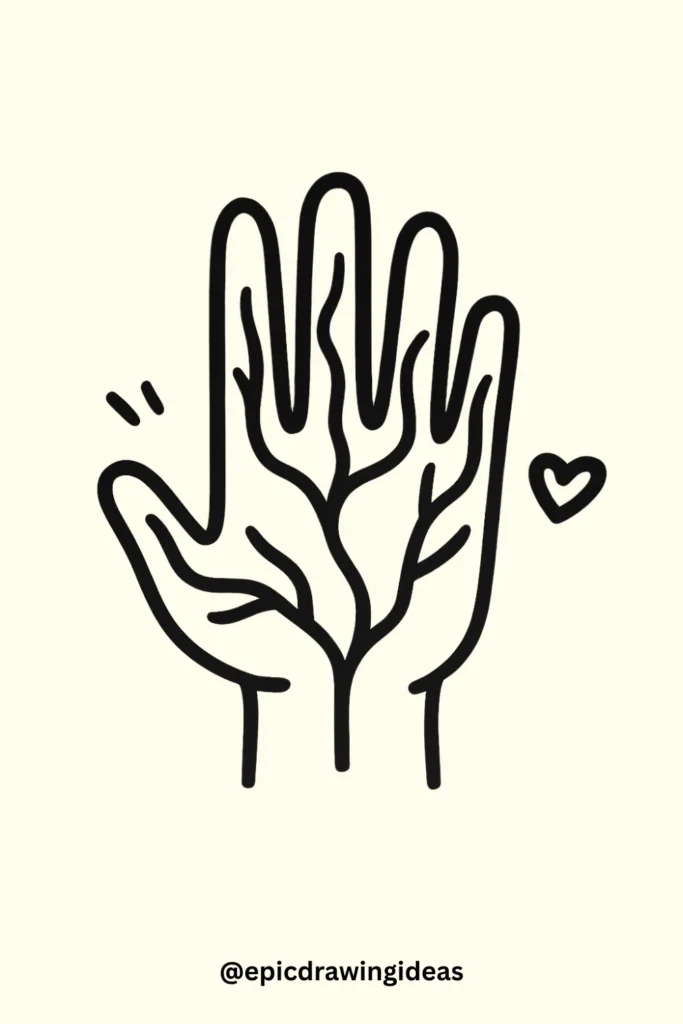
This illustration would depict the veins in the hand, with bold pencil strokes outlining each vein.
The veins should be simplified and curvy, and the overall shape of the hand should be drawn with smooth, rounded edges.
Add a few hearts or sparkles along the veins to add whimsy.
17. The Human Ear
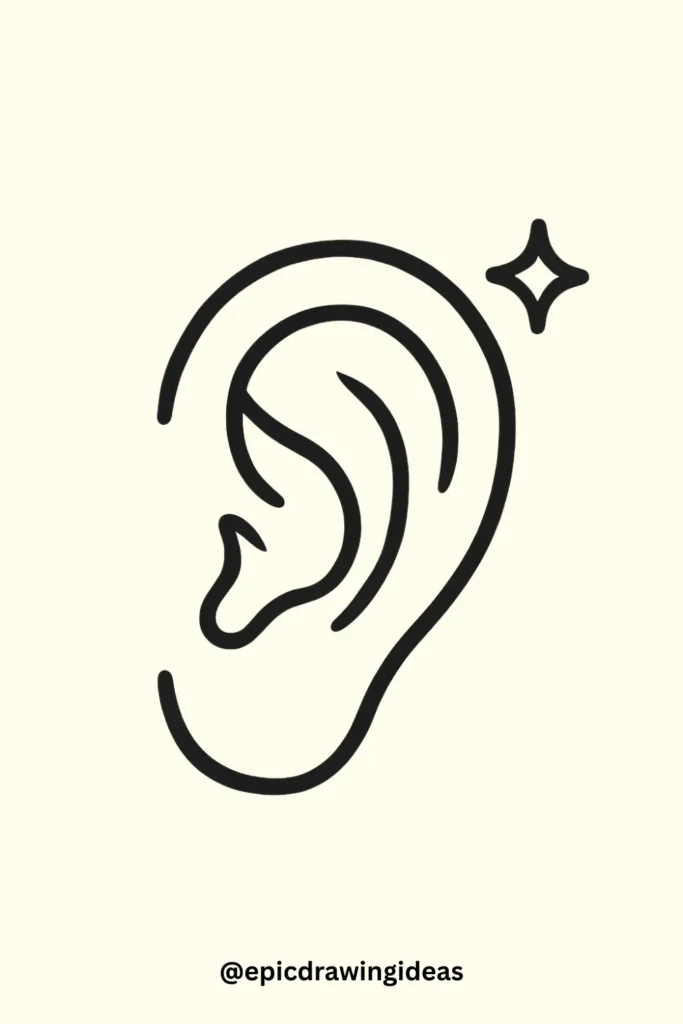
The outer ear should be drawn in a bold pencil style with soft curves and clearly defined shapes.
The drawing should include the ear canal and outer folds of the ear, all simplified for a cute effect.
You can add a little sparkle around the ear to enhance the cute feel.
18. The Knee Joint
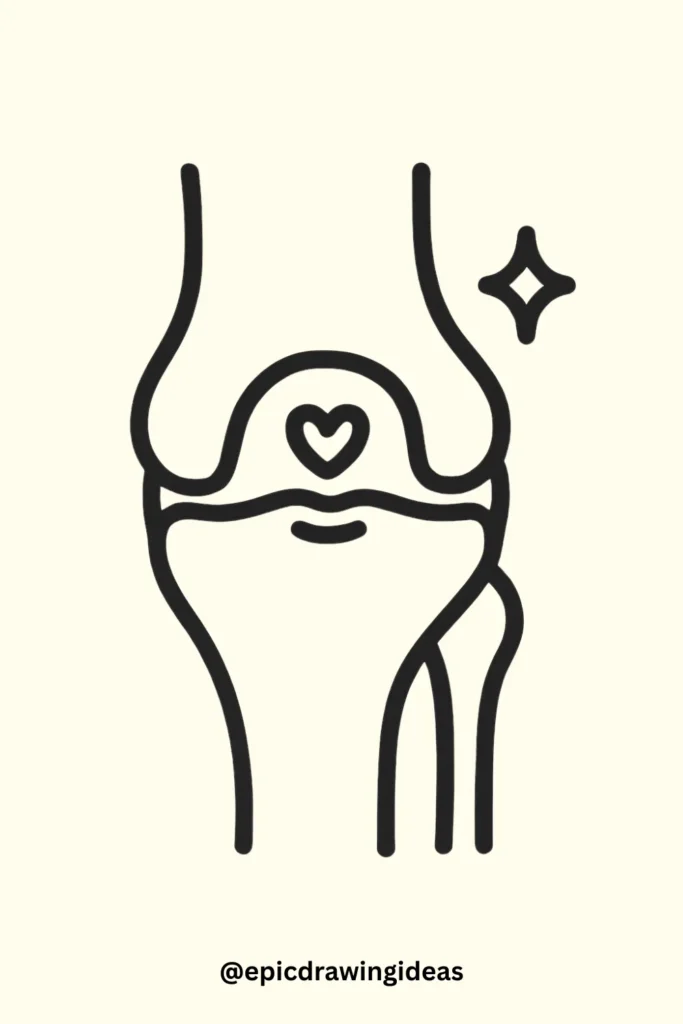
A cute, simplified version of the knee joint with bold lines to show the patella, femur, tibia, and fibula.
The joint itself should be represented in a playful, rounded way, with soft pencil strokes around the ligaments and a whimsical detail like a tiny heart at the center of the kneecap.
19. The Pelvis
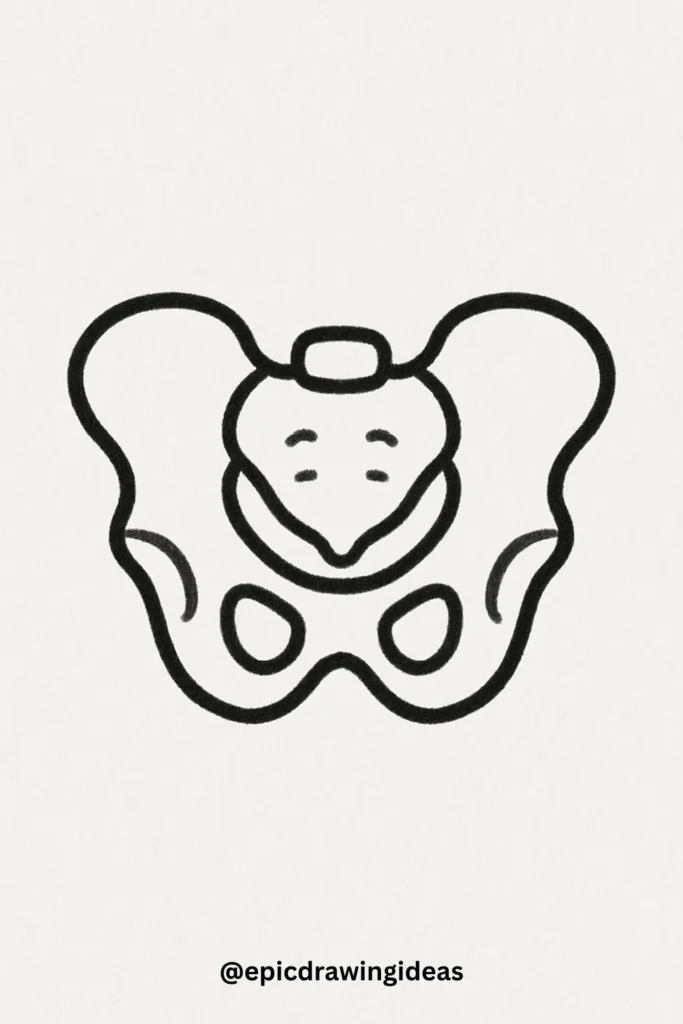
The pelvis is depicted with bold, smooth curving lines, emphasizing its gentle, rounded structure.
The bones are simplified, with soft contours and minimal details, giving the design a clean, modern feel.
Along the pelvic brim, tiny hearts and sparkles are added to bring a playful and whimsical touch.
This minimalistic approach makes the pelvis appear both soft and approachable while still maintaining its anatomical essence.
20. The Collarbone
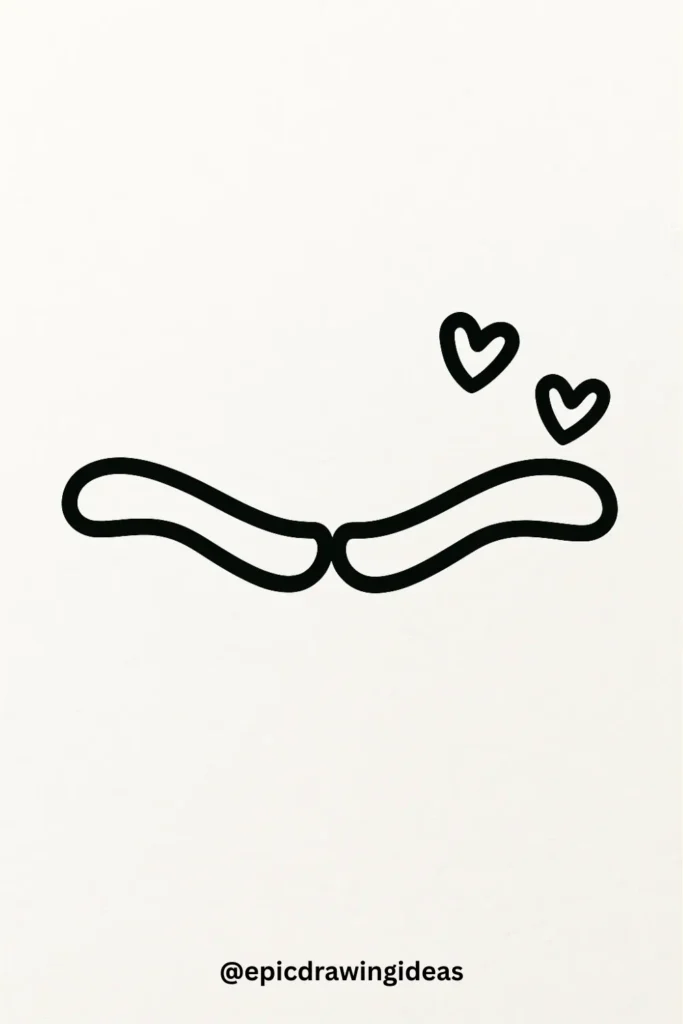
The collarbone should be drawn with smooth, curvy lines, with bold pencil strokes used to outline its shape.
The clavicle should be simple and soft, with a minimalistic style. Add cute hearts or sparkles on either side of the collarbone for a charming, whimsical look.
21. The Bladder
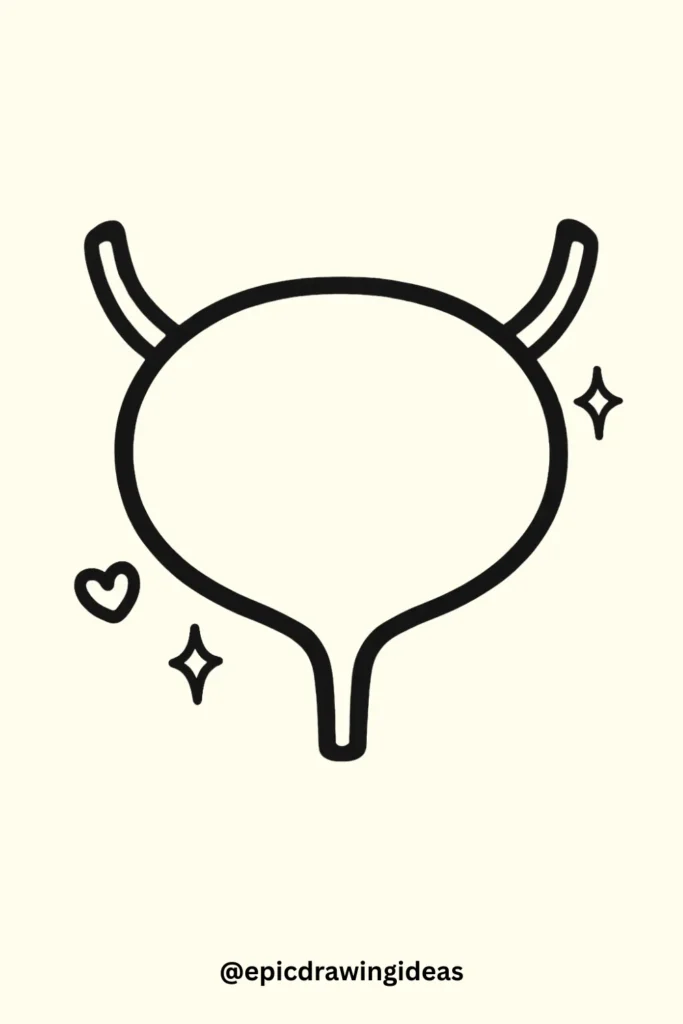
This drawing would focus on the bladder’s simple, rounded shape, with thick pencil strokes for clarity.
To make it playful, add tiny sparkles or hearts around it to symbolize its function in a fun, whimsical way.
22. The Tongue
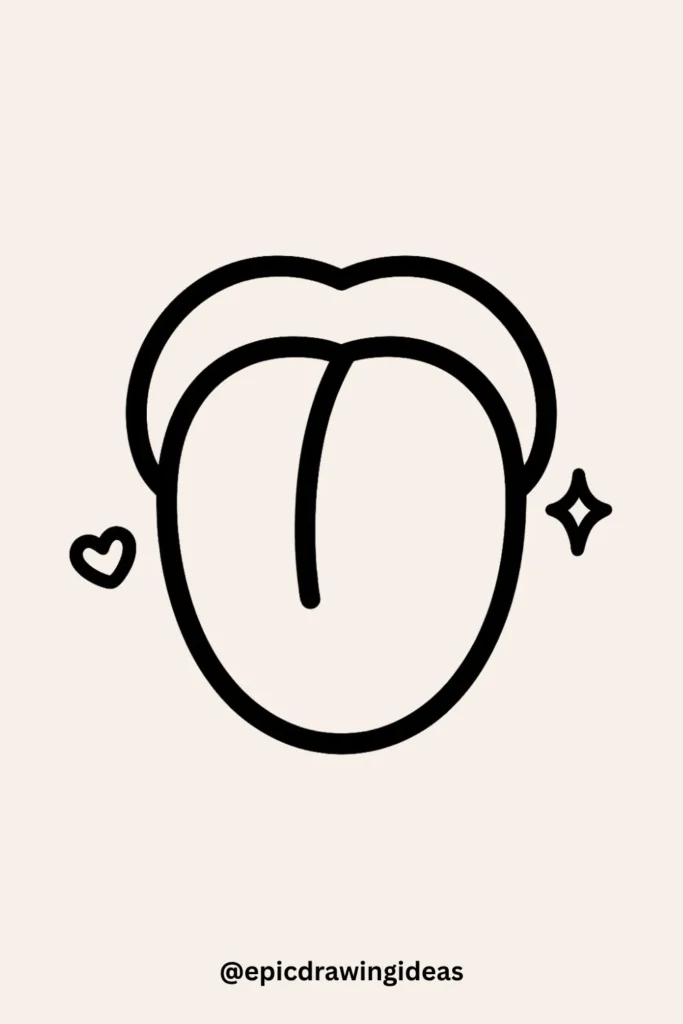
The tongue should be depicted with thick pencil strokes, showing the basic shape and texture.
Keep the design playful by adding little sparkles or hearts around the tongue to make it feel more endearing.
23. The Larynx
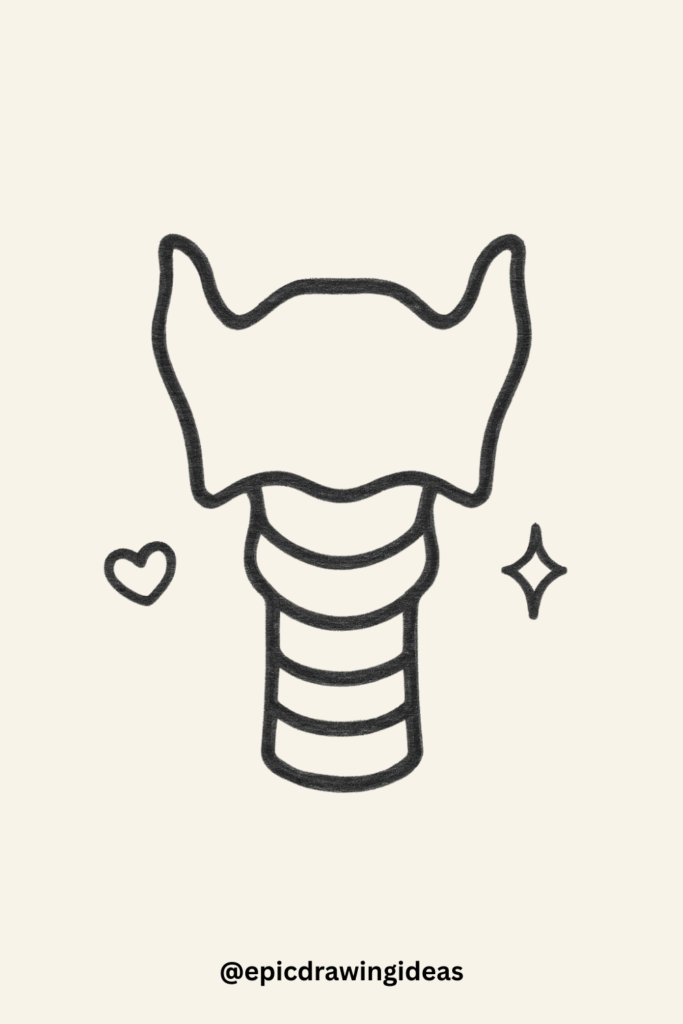
The larynx should be outlined in bold pencil, with a focus on its shape and position in the throat.
Add small hearts or sparkles around it to give it a cute, playful feel while maintaining anatomical accuracy.
24. The Liver
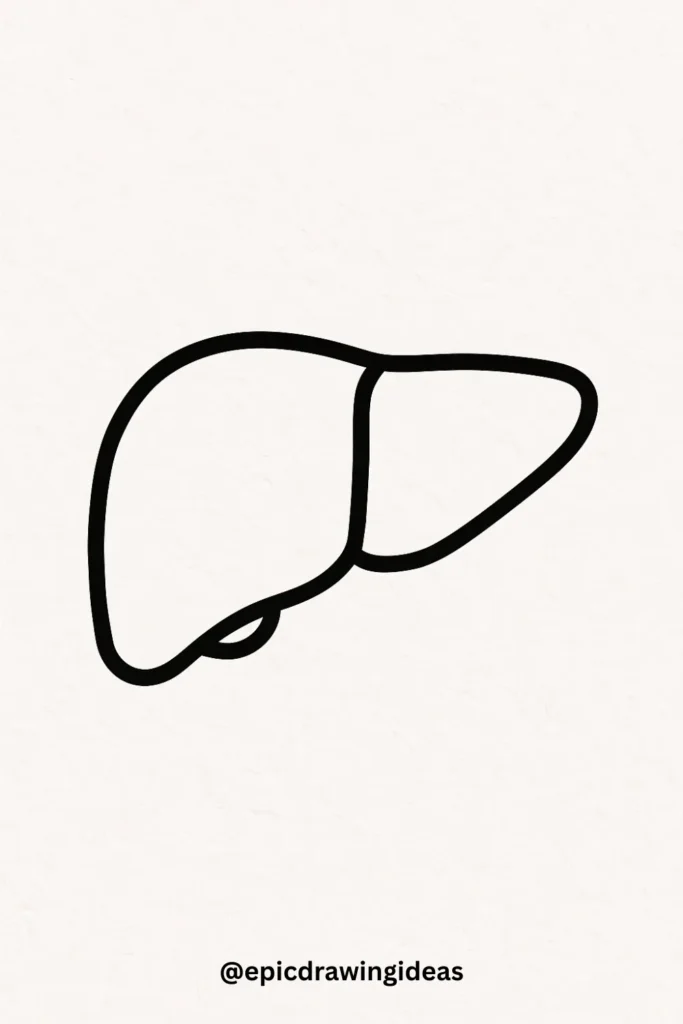
This drawing would depict the liver in a cute, simplified way, with bold pencil strokes that show its shape.
Use rounded lines for a softer, approachable look, and include a little heart or sparkle inside for added charm.
25. The Biceps and Triceps
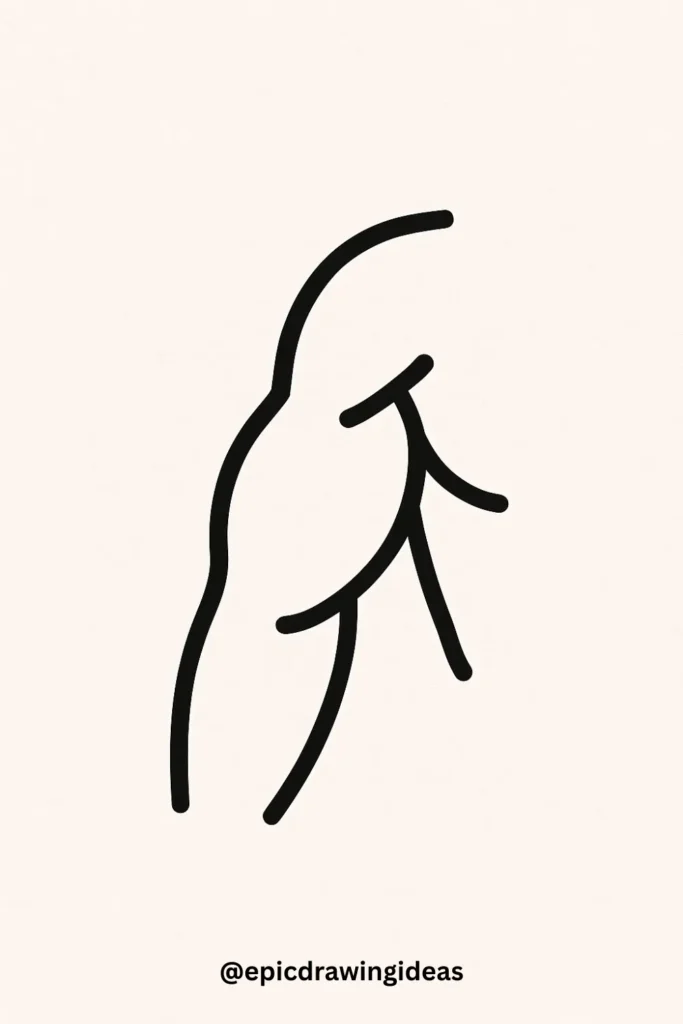
The biceps and triceps should be shown with exaggerated curves, using bold pencil strokes to define their shape.
Make them appear soft and playful by adding little hearts or sparkles around the muscles, giving it a fun, anatomical touch.
26. The Diaphragm
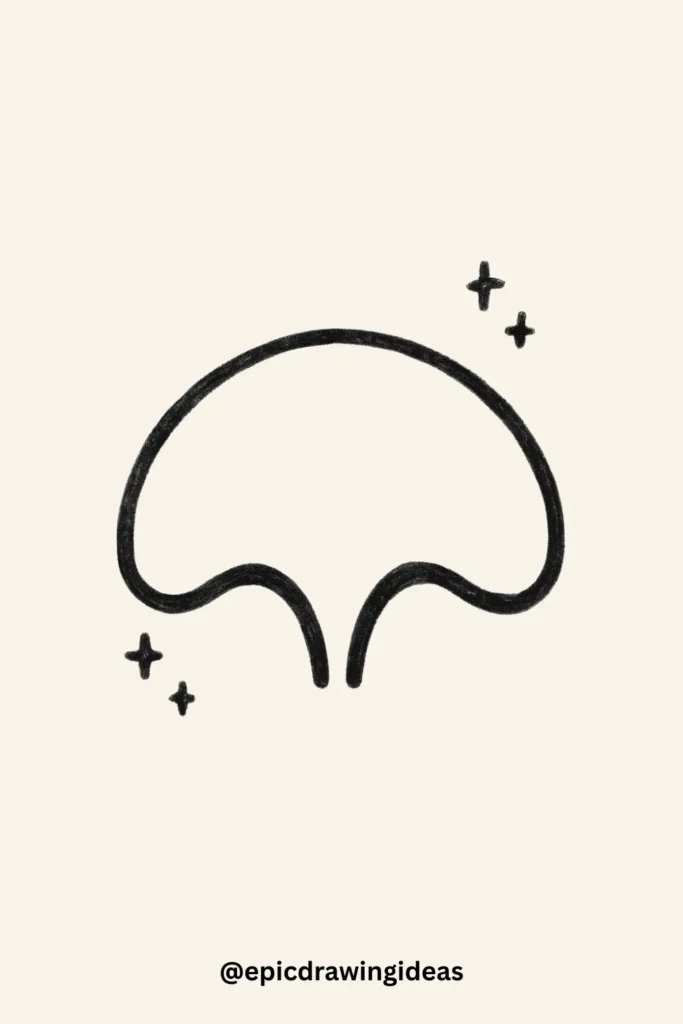
The diaphragm can be drawn with smooth, rounded lines, and subtle shading to show its dome-like shape.
Keep the lines bold and emphasize the curve for a cute, stylized anatomical representation.

